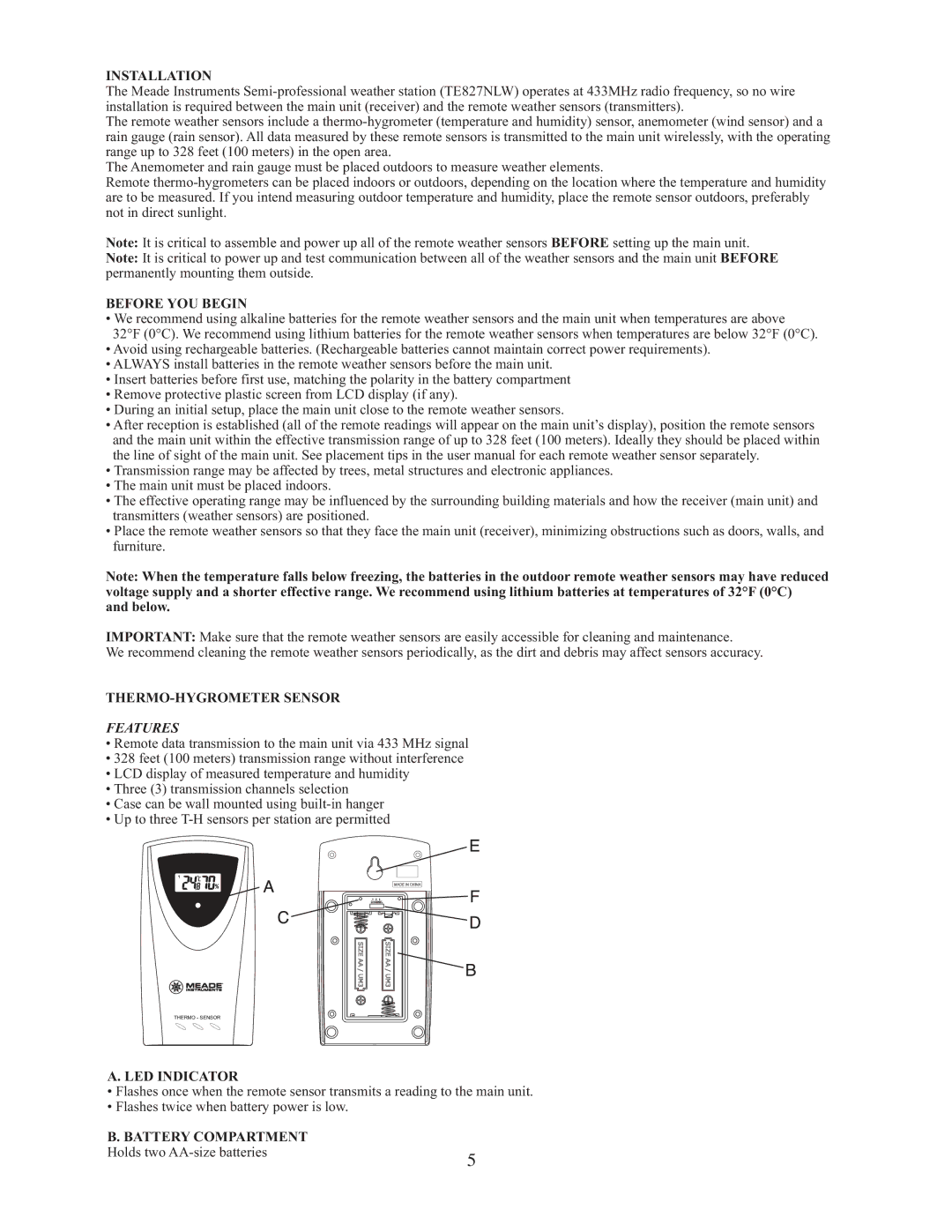
INSTALLATION
The Meade Instruments
The remote weather sensors include a
The Anemometer and rain gauge must be placed outdoors to measure weather elements.
Remote
Note: It is critical to assemble and power up all of the remote weather sensors BEFORE setting up the main unit.
Note: It is critical to power up and test communication between all of the weather sensors and the main unit BEFORE permanently mounting them outside.
BEFORE YOU BEGIN
•We recommend using alkaline batteries for the remote weather sensors and the main unit when temperatures are above 32°F (0°C). We recommend using lithium batteries for the remote weather sensors when temperatures are below 32°F (0°C).
•Avoid using rechargeable batteries. (Rechargeable batteries cannot maintain correct power requirements).
•ALWAYS install batteries in the remote weather sensors before the main unit.
•Insert batteries before first use, matching the polarity in the battery compartment
•Remove protective plastic screen from LCD display (if any).
•During an initial setup, place the main unit close to the remote weather sensors.
•After reception is established (all of the remote readings will appear on the main unit’s display), position the remote sensors and the main unit within the effective transmission range of up to 328 feet (100 meters). Ideally they should be placed within the line of sight of the main unit. See placement tips in the user manual for each remote weather sensor separately.
•Transmission range may be affected by trees, metal structures and electronic appliances.
•The main unit must be placed indoors.
•The effective operating range may be influenced by the surrounding building materials and how the receiver (main unit) and transmitters (weather sensors) are positioned.
•Place the remote weather sensors so that they face the main unit (receiver), minimizing obstructions such as doors, walls, and furniture.
Note: When the temperature falls below freezing, the batteries in the outdoor remote weather sensors may have reduced voltage supply and a shorter effective range. We recommend using lithium batteries at temperatures of 32°F (0°C) and below.
IMPORTANT: Make sure that the remote weather sensors are easily accessible for cleaning and maintenance.
We recommend cleaning the remote weather sensors periodically, as the dirt and debris may affect sensors accuracy.
THERMO-HYGROMETER SENSOR
FEATURES
•Remote data transmission to the main unit via 433 MHz signal
•328 feet (100 meters) transmission range without interference
•LCD display of measured temperature and humidity
•Three (3) transmission channels selection
•Case can be wall mounted using
•Up to three
THERMO - SENSOR
A. LED INDICATOR
•Flashes once when the remote sensor transmits a reading to the main unit.
•Flashes twice when battery power is low.
B. BATTERY COMPARTMENT |
|
Holds two | 5 |
|
